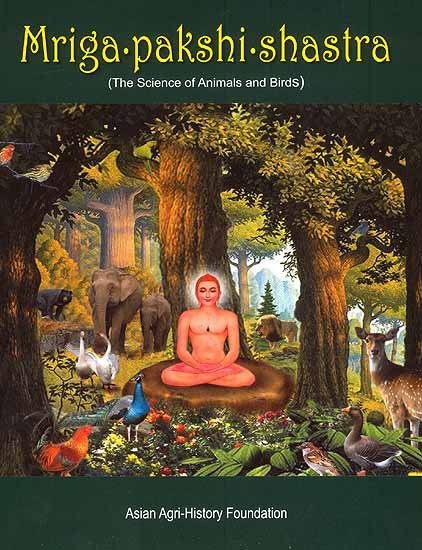Animal Kingdom (Tiryak) in Epics
by Saranya P.S | 2019 | 51,616 words | ISBN-10: 8190396315 | ISBN-13: 9788190396318
An English study the Animal Kingdom (Tiryak) in Epics.—The present thesis is based entirely on Ramayana and Mahabharata although an attempt is made to analytically compare the Animal kingdom with Mriga-pakshi-shastra—‘The ancient Indian science of of Animals and Birds’....
Chapter 4.28 - The Kokila (Koel) in the Epics
In Sanskrit literature, there is a great appreciation of Kokila’s sweet calls. The various poets have also taken note of its parasitic behaviour. In ValmikiRamayana, there are a lot of references to the cuckoos showing their existence in the forests as adding to the beauty of the forests.
For example, we read:
“The hour of sunrise is at hand and the glorious night has departed. Over there, the very dark bird, the cuckoo is uttering its notes.”
“Indeed, love torments me, overwhelmed as I am with grief and engaging in a quarrel with me, the cuckoo merrily challenges me.”
Emerging from mountain caves and as though making the trees dance the dulcet notes of cuckoos in heat, the breeze has started singing as it were very happy.”
There are many references in the Mahabharata which indicate the sweet calls of the cuckoos in the forests and making them more beautiful by their melodious notes.
In the Mahabharata, Shakuntala says to Dushyanta, “A crow hatches the eggs of the cuckoos along with her own. Then how can you not believe your own son when you know everything?There are many references to the kokila in the Ramayana.
Kokilas are generally found in forests. Their usual colours are red and black, white and black and blue. They have small beaks. Their calls are like 'kuhu' and are very pleasing to the ear. When they sing with their partners, their calls become much more interesting. Their bodies have a pleasing aroma. They subsist mainly on mango leaves and mango blossoms. They are scared of cold, wind and heat. They like to take shelter in shady places. They live in orchards or forests where there are plenty of trees and lavish foliage. They become sexually active in the spring and summer. It is known that it is the crows that hatch the eggs of the kokila. In one year's time, the chicks become mature. Until then they are looked after by their mother. People love them and admire them for their melodious sound. They bring grace to the place where they dwell.
There are 4 types of Kokilas[1].
The first variety is called Vanapriya (Forest Lover). They are dark blue with fine wings. Their distinct features are their long tails, melodious voice and their lust for wandering all the time. They need only a little food and live contentedly on mango trees. They subsist on leaves. They like to be in the company of their partners. They are intelligent. If they are trained they can imitate the sounds of other birds and animals. Training them is an easy task.
The 2nd variety is called Prabhrit. Parabhrit means nourished by another. They are tall and have long wings. They go on cooing especially in spring and summer. They like roaming about gardens and trees with flowers. They can fly as fast as crows. Their melodious voice captivates the hearts of separated lovers. The heat of the sun makes them tired and dries their throat. They look at their best in spring. They like to change their abode very often, moving from one forest to another one.
The 3rd variety is called Kokila. They are distinguished by their white and black body colour. They have soft, lovely body and melodious voice. Their large head and long tail make them look very attractive. They also have rolling eyes and big belies. They feed on the tender mango leaves and often live on mango trees. They also love to stay in the homes of people. Their bodies emit a pleasant aroma. They eyes beam with delight and they are very amicable.
The 4th variety is Pika (Red-faced Malkoha): Their bodies are coloured white and black. They have red eyes and small physique. They sing very melodiously in spring and summer. They are very timid by nature. They take shelter among dense trees with a lot of shade. Their playful movements are a pleasure to watch. They move in groups and are scared of loud noises. Their youth lasts for 4 years and then they lose their sheen and become old. They live for 5 years. They are some of the best kinds of birds that can thrill us with their melody.
Footnotes and references:
[1]:
Ibid.29.416b
